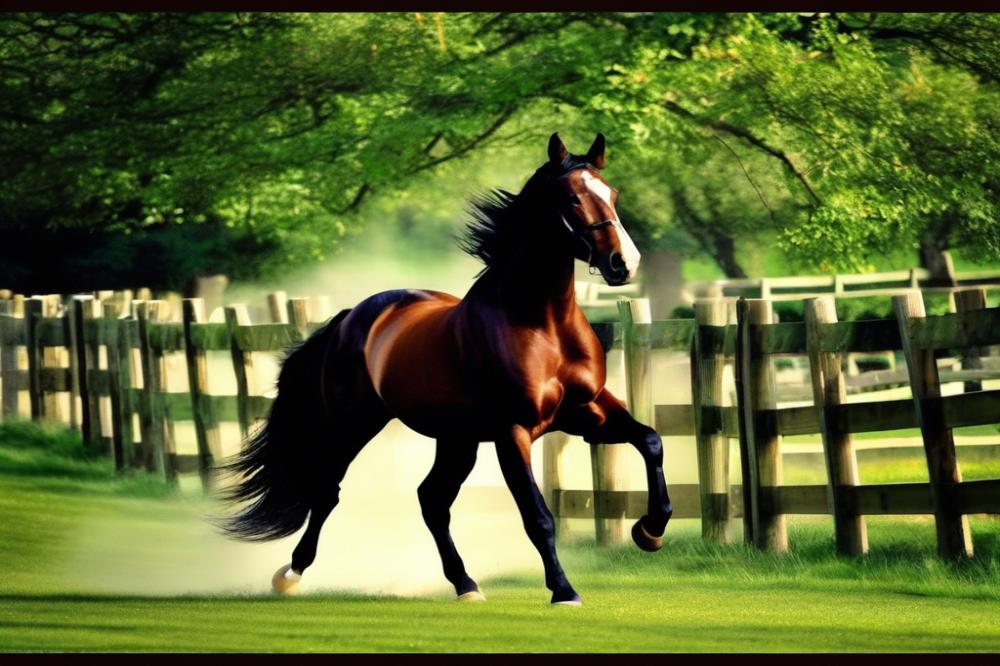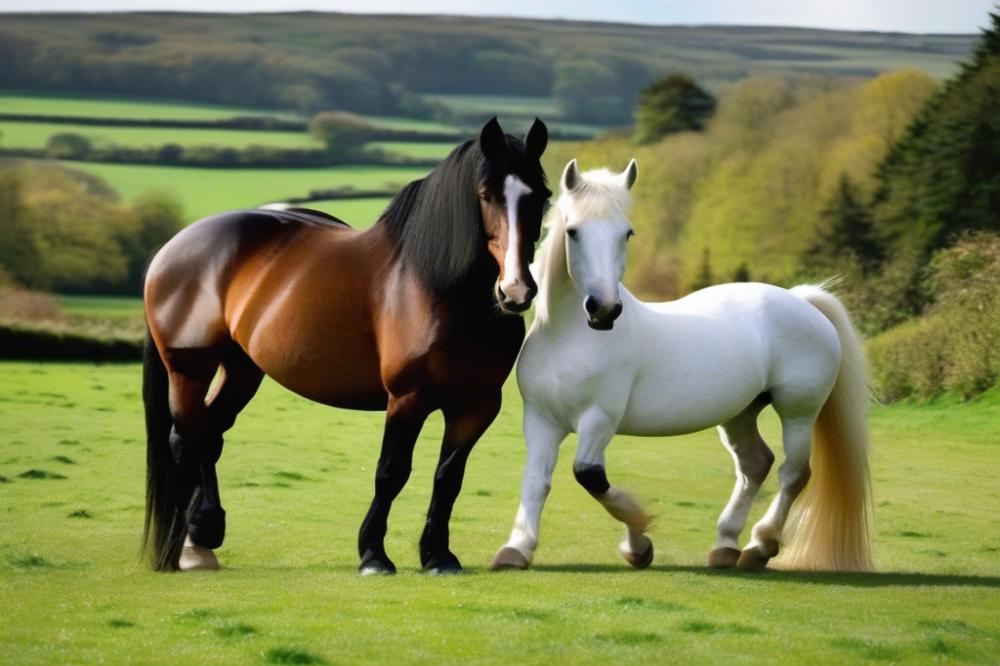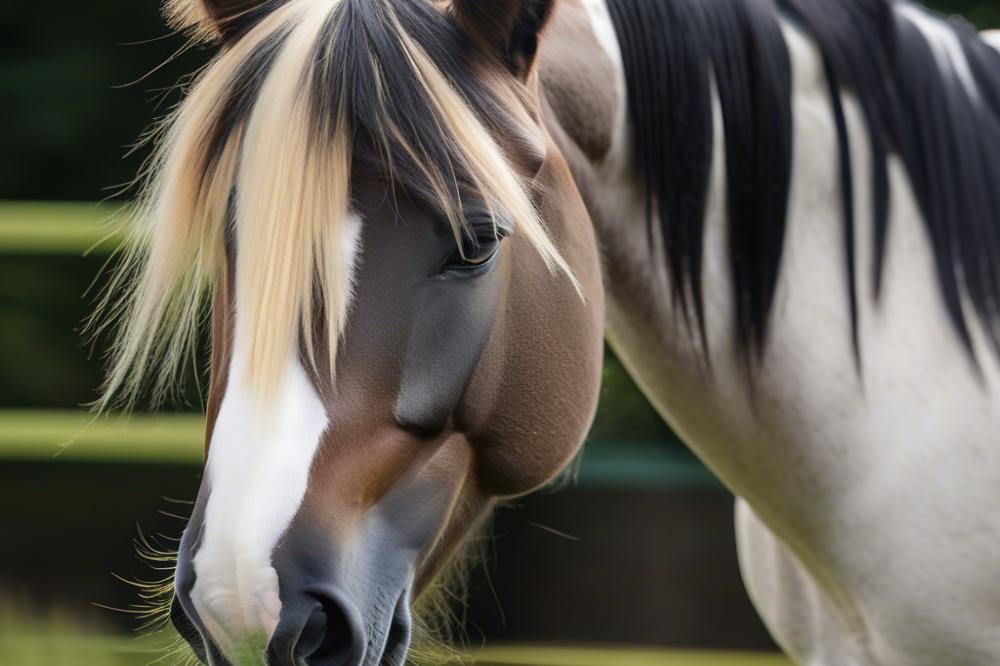Understanding the Breeds
Many horse enthusiasts are familiar with both the Irish Cob and Thoroughbred breeds. The Irish Cob, often celebrated for its stunning appearance and gentle temperament, traces its roots back to the proud lineage of draft horses. These horses are known for their shaggy manes, feathered legs, and sturdy builds. Additionally, their calm demeanor makes them suitable for various riders, from beginners to seasoned equestrians.
In contrast, the Thoroughbred is the embodiment of speed and grace. Originally bred for racing, these horses are tall and athletic, with a disposition suited for competitive sports. Their elegance has endeared them to many, whether on the racetrack or in the show ring. Breeders often take note when discussing a breeds of horses list, as both breeds have made a significant mark in their own right.
Why Crossbreeding?
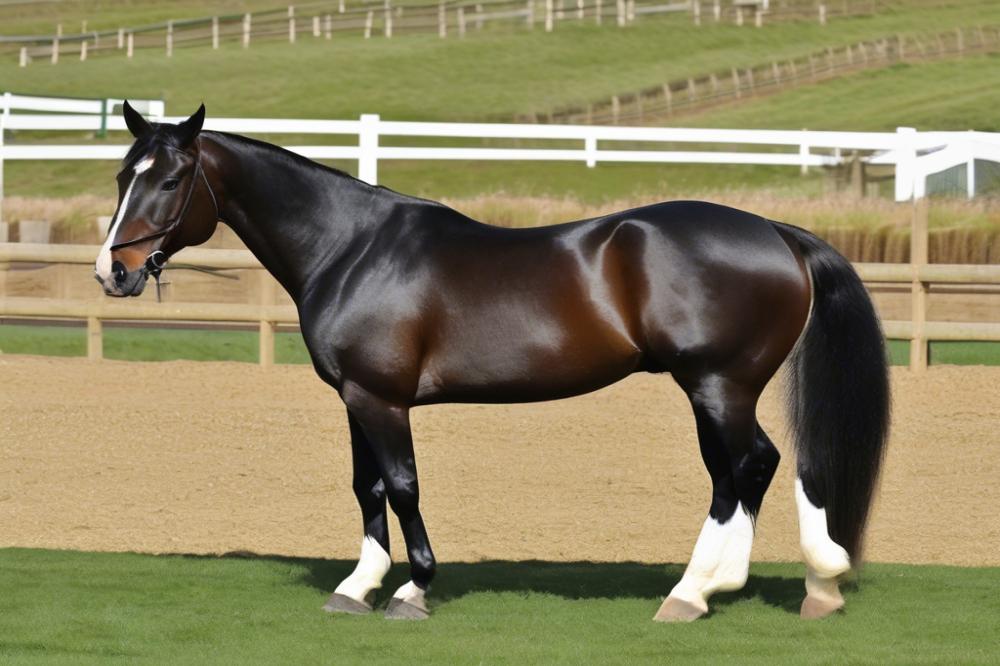
Crossbreeding is a popular practice in the world of horse breeding for several reasons. Combining the strength of an Irish Cob with the speed of a Thoroughbred can yield offspring that possess the best traits of both parents. Horse care becomes an exciting adventure when looking after a crossbred foal that might balance endurance and versatility. Riders often seek these horses for more than just their looks; they are after performance and temperament.
While there are many enticing benefits to mixing these breeds, potential drawbacks exist as well. Sometimes, unpredictability arises in the offspring, particularly regarding temperament and physical traits. Breeders may find themselves scratching their heads when a foal doesn’t quite meet their expectations. However, that unpredictability is part of the thrill of horse breeding. These characteristics can lead to surprising results, much like a box of chocolates where the exterior often gives no clue about the flavor contained within.
The Bright Side and the Attention Needed
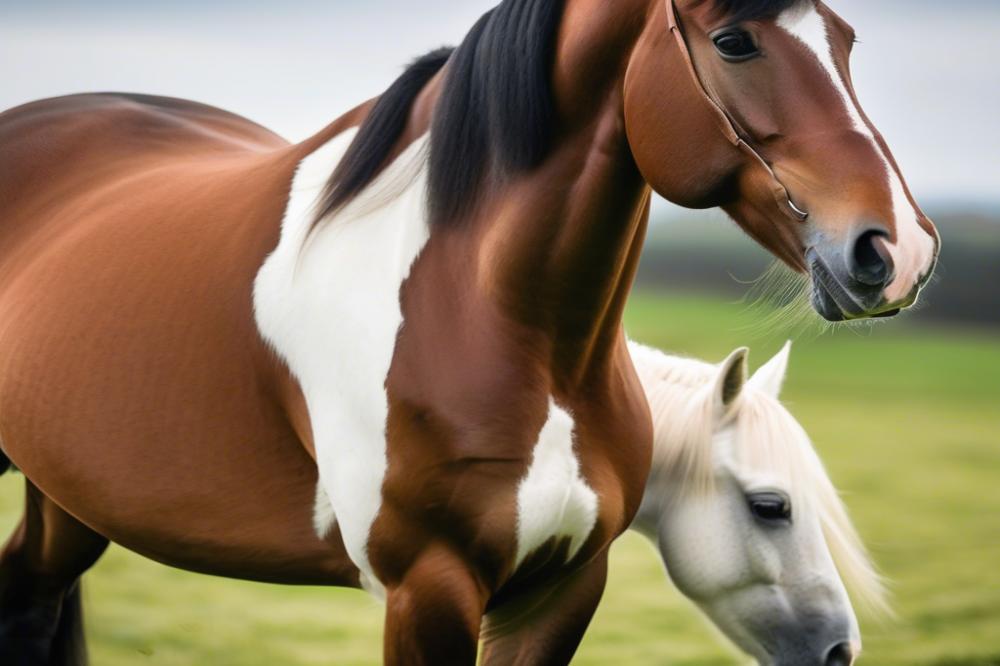
Crossing the Irish Cob and Thoroughbred can result in horses that are not only visually striking but also incredibly useful across many disciplines, from eventing to dressage. Combining these two breeds can produce horses with an appealing blend of strength and athleticism, as well as the gentle nature of the Cob. Moreover, let’s not forget the mare milk benefits for those young foals, which provide vital nutrients to kickstart their growth in those critical early days.
Of course, every rose has its thorn. Potential owners must be prepared for the unique challenges that come with crossbreeds. They may exhibit a mix of temperaments from their lineage. However, the rewards often outweigh the risks. The charm of an Irish Cob and Thoroughbred cross can steal hearts and make memories that last a lifetime.
Characteristics of Irish Cobs
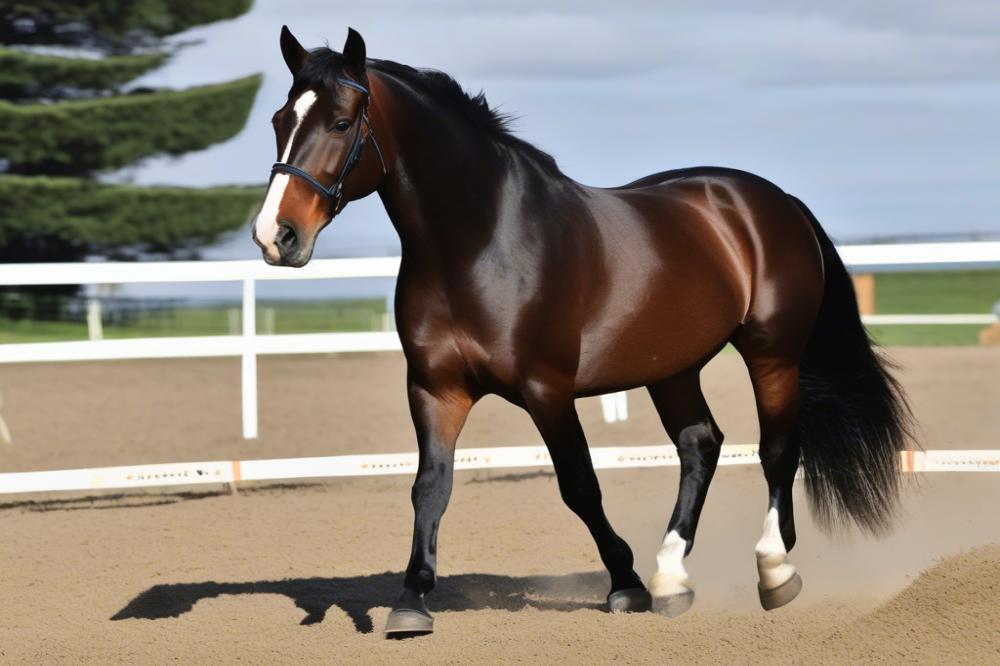
Description of physical traits
The Irish Cob is a striking horse. Its build is solid and sturdy, resembling a small draft horse. Most often, you’ll see a thick mane and tail that flow like a river. The coat can be a variety of colors, from deep blacks to bright paints. Feathering on the legs is almost like a natural boot, giving it an elegant touch. These horses are not just good-looking; they are also built for strength. Their limbs are powerful, designed to carry weight and work hard.
Temperament and behavioral tendencies
Known for their gentle nature, Irish Cobs are friendly and sociable. They thrive on human interaction, almost like they were born to be friends. Often, you’ll find them calm in nature, making them great for beginners and experienced riders alike. These horses have a sense of humor, too! It’s not uncommon for one to playfully nudge you for a treat or seek attention when you least expect it. With patience and consistent training, they become loyal companions, standing by your side like your best buddy.
Versatility and suitability for various equestrian disciplines
When it comes to versatility, Irish Cobs take the cake. These horses excel in numerous disciplines, making them fit for almost any rider. Whether it’s dressage, jumping, or just a leisurely trail ride, they adapt easily. Breeding practices often showcase their ability to maintain strength and stamina, no matter the task. You might even see them in driving events! Their nature allows trainers to mold them into competitive athletes or gentle therapy horses. Crossbreeding with Thoroughbreds adds even more potential to their already impressive repertoire, mixing agility with that lovable cob personality.
Characteristics of Thoroughbreds
Description of Physical Traits
Thoroughbreds pack a punch when it comes to looks. They typically feature long, lean bodies that scream power and grace. You’ll often see withers that stand tall, almost like a proud statue. Legs tend to be long and strong, built for speed. The coat shines like a well-polished car, often in solid colors like bay, chestnut, or gray. Their large, expressive eyes reveal eagerness and intelligence. In short, these horses are the athletes of the equine world.
Typical Temperament and Energy Levels
Temperament can be a mixed bag with Thoroughbreds. Many are spirited and full of life, which means they need lots of energy outlets. They often have a strong desire to please, making training an enjoyable experience for both horse and rider. However, handling can be a bit tricky at times. These horses sometimes lack patience, especially if they feel bored. Imagine a teenager being told to stay indoors when all their friends are outside playing. That’s the vibe you might get! Overall, they require skilled horse care to keep their spirit in check and their minds engaged.
Common Uses in Racing and Other Disciplines
Racing is where Thoroughbreds truly shine. They are bred for speed and stamina, and the racetrack is their natural habitat. Beyond racing, many of these horses excel in show jumping, dressage, and eventing. Crossbreeding with an Irish Cob can produce a versatile horse that inherits both power and calmness. This combination allows for a great mix of capabilities. Whether galloping at full throttle or quietly participating in a local show, they adapt well. Riders appreciate their agility in both competitive and recreational settings. In equine breeding, this makes them a popular choice for many enthusiasts aiming for a talented horse. With the right training and horse breeding practices, a Thoroughbred can blossom into a superstar.
Benefits of the Irish Cob and Thoroughbred Cross
When considering equine breeding, the Irish Cob and Thoroughbred cross offers some exciting advantages. First off, athletes on four legs stand to gain improved athleticism and performance potential. A Thoroughbred is known for speed, while the Irish Cob brings strength. Together, they make a horse that can tackle various challenges, whether it’s an eventing course or a casual trail ride.
Versatility is another plus when you mix these breeds. Riders often find this cross suitable for multiple disciplines, from dressage to jumping. Have you ever tried to maneuver a pony around a tight turn? The Cob’s agility combined with the Thoroughbred’s responsiveness makes it a delightful experience for riders of all levels. It’s like having your cake and eating it too—sweet and satisfying.
Let’s talk about temperament. Many horse enthusiasts appreciate the calm, friendly nature of the Irish Cob. Add in the intelligence of the Thoroughbred, and you have a horse that is trainable and eager to please. It’s like having a buddy that also knows how to excel in the show ring. Imagine that blend of playfulness and professionalism on the same horse!
When it comes down to horse care and horse breeding, the benefits of this cross can be significant. Owners will find that they have a horse that’s not just good to look at but also willing to learn and cooperate. This combination creates a partnership that’s rewarding for both horse and rider.
Whether you’re in it for the thrill of competition or the joy of a weekend ride, exploring the possibilities of crossbreeding these two remarkable breeds can be a game changer. With the right equine genetics at play, you might just find your next best friend in the barn.
Considerations for Breeding Irish Cob and Thoroughbred Crosses
Factors to Consider When Selecting a Mare and Stallion
When thinking about breeding, picking the right mare and stallion is crucial. Not all horses share the same qualities. An Irish Cob has the charm and strength, while the Thoroughbred brings speed and agility. Both have something worthwhile to offer. Evaluate their temperaments too. A calm demeanor can make training easier later on.
Consider the specific traits you want in the offspring. Do you aim for a sturdy workhorse or a graceful competitor? Knowing your goals can help direct your choices during this process. Always look into the mare’s and stallion’s performance history. This information can often provide insights into what you might expect from the foal.
Importance of Lineage and Genetic Health
Lineage plays a huge role in horse breeding. Look into the ancestry of both horses. A strong pedigree can contribute to the genetic reliability you want. Check for any history of health issues, too. Certain genetic problems can crop up if there’s not enough diversity in breeding.
Genetic health is like checking the engine of a car before a long road trip. You need to know it can handle the journey ahead. It might pay off to consult an equine genetics expert. They can walk you through potential problems and what traits to look for. After all, you wouldn’t want to end up with a horse that has a bunch of unexpected health hurdles!
Recommended Breeding Practices for Optimal Results
When it comes to actual breeding practices, preparation is key. Keep a close eye on your horses’ health prior to breeding. Regular vet check-ups can help ensure they’re in tip-top shape. Timing matters as well. You will need to pay attention to the mare’s heat cycles. Fertility can vary, so be patient during the process.
Consider using modern techniques that may help improve your chances of successful conception. Artificial insemination can broaden your choices, especially if a suitable stallion is far away. This method also allows for more careful selection, as you can analyze genetic material closely.
Lastly, once the foal is born, horse care should not be forgotten. The early years will shape how well the young horse grows into an adult. Proper nutrition and socialization are essential. Keep in mind that each horse is different, and understanding their personality will aid in training. Remember, you’re not just creating a horse; you’re nurturing a companion on this journey of horse breeding.
Training and Care for Irish Cob and Thoroughbred Crosses
Training is a key component for any horse, but especially for a cross. A mix of behaviors from both the Irish Cob and the Thoroughbred can create quirks that need attention. Socialization, for example, is essential. Horses are herd animals, and they thrive when they interact with others. Introducing them to different environments helps them become confident and well-adjusted. Think of it as giving them a sturdy pair of shoes—they will explore the world more easily.
Considering specific care requirements is equally important. Grooming routines should be consistent. The thick coat of the Irish Cob may need extra brushing, particularly in warmer months. Regular checks for mud or debris prevent skin irritations. Besides grooming, hoof care cannot be overlooked. Both breeds benefit from routine farrier visits. Healthy hooves mean happy horses. It’s like providing a comfy pair of sneakers for long walks; it just makes sense.
Nourishing your equine friend well is crucial for their development. Quality feed should be the foundation of any diet. With crossbreeding, genetics play a role in how much energy they need. An Irish Cob and Thoroughbred mix might have more muscle and energy than either parent. Therefore, consider adding hay, grains, and vitamins to their meals. Keep an eye on their weight too; we want a robust horse, not one that wobbles like a jelly on a plate.
Exercise is vital for their health, and boredom can lead to trouble. Schedule daily rides and time out in the pasture. From trotting to cantering, encourage plenty of movement. Building a routine can make this fun for both of you. Remember, a tired horse is often a happy one!
Success Stories and Notable Examples
Many riders rave about their experiences with the Irish Cob and Thoroughbred cross. These horses are winning hearts and competitions alike. In dressage, show jumping, and eventing, many noteworthy examples of these crosses have shone brightly. Competitors often highlight their versatility and athleticism as standout traits.
Some owners have shared stories of how these horses took them to the next level in competitions. One rider, a proud owner of such a cross, mentioned, “My horse has the heart of an Irish Cob and the speed of a Thoroughbred. We’re a dynamic duo!” Trainers appreciate the strong work ethic these horses display. Enthusiastically, they note that the combination often leads to exceptional results in various equestrian events.
Testimonials from Owners and Trainers
Trainers often weigh in on the potential with this particular crossbreeding. Hailing from different backgrounds, many find that these horses possess a robust nature and a friendly demeanor. “Not only do they have physical talent, but their intelligence makes them easy to train,” said one trainer, while another commented, “These horses are so eager to please; it’s like they read your mind!”
As you can see, the lasting bonds between riders and their horses illustrate the merits of these unique animals. Owners also love sharing tales about their journeys together. One remarked, “Every ride is an adventure, and I wouldn’t trade it for anything.” Indeed, the stories range from humorous mishaps during training to triumphs at major competitions.
Contributions to Various Equestrian Disciplines
In multiple disciplines, the advantages of the Irish Cob and Thoroughbred cross are undeniable. This blend seems to result in horses that do well in both jumping and dressage arenas. With well-rounded skills, they make wonderful all-around competitors. Furthermore, their adaptable nature often allows them to excel in multiple disciplines, captivating both riders and judges.
The impact on equine breeding can’t be overlooked. Each generation shows improvements thanks to thoughtful selections based on their parents’ best attributes. Interestingly, many riders find joy in training these horses for more than one event. They tap into the horses’ innate abilities, which often leads to successful outcomes in competitions.
Alongside the tales of success, keep in mind that horse care plays an important role in bringing out the best in these equine athletes. Owners invest time and energy into sound training methods and proper nutrition. When riders take the time for personalized care, these horses will likely excel in their careers. This bond fosters trust, resulting in even better performances.
Wrapping It All Up: The Best of Both Breeds
Throughout this article, we’ve explored the many advantages and standout traits of crossing the Irish Cob with the Thoroughbred Horse. This delightful mix not only brings together the strength and versatility of the Cob but also the grace and athleticism of the Thoroughbred. Breeders often find themselves fascinated by the result—an athletic horse that can excel in various disciplines, from jumping to dressage. This crossbreed, with its solid foundation and impressive movement, stands to impress in competitions, whether you’re talking about a spirited horse halter class or a demanding riding event.
Potential breeders and horse owners should feel encouraged to consider this cross. By combining the two breeds, you create a horse that is both charming and hardworking. These horses often boast a willing attitude, making them accessible for riders at different skill levels. Imagine the smile on your face as you watch your crossbreed gallop across the pasture, their coat glistening in the sun. Plus, the challenge of molding young horses into companions can be immensely rewarding.
Looking ahead, the future of this cross seems bright and promising in the equestrian world. As more people recognize the benefits of blending these two wonderful breeds, we might see an increase in their popularity. It’s like comparing draft horse vs Clydesdale—each brings something special to the table, yet they can complement each other beautifully. With the right care and training, these horses can become not just competitive athletes but also beloved family members.
In summary, the Irish Cob and Thoroughbred cross offers a blend of qualities that make it a worthy choice for both novice and experienced equestrians alike. Breeders have a canvas to work with that allows for creativity and innovation, fostering a new generation of exceptional horses. So, if you’re considering adding one of these gems to your family, you’re on track for an exciting journey ahead!

